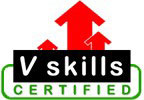Table of Content
1. Human Anatomy
1.1 Homeostasis
1.2 Anatomic terminology
1.3 Human Kinetics
1.4 The Nervous System
1.5 The Skeletal system
1.6 The Muscular System
1.7 The Endocrine System
1.8 The Cardio Respiratory system
2. Kinesiology & Biomechanics
2.1 Basics of Motion and force
2.2 Muscular and posture analysis
3. Injuries Prevention and First Aid
3.1 Injuries types
3.2 Injuries Prevention
3.3 Injury treatment
3.4 RICE method
3.5 First Aid
4. Nutrition
4.1 Calorie
4.2 Energy Production
4.3 Proteins
4.4 Carbohydrates
4.5 Fats
4.6 Vitamins
4.7 Minerals
4.8 Exercise & Diet
4.9 Supplements
5. Fitness Assessment
5.1 Cardiovascular Endurance
5.2 Strength and Muscular Endurance
5.3 Flexibility Testing
5.4 Body Composition
6. Training
6.1 Scheduling and training methods
6.2 Training methods
6.3 Designing Training Program
6.4 Training Stages
6.5 Flexibility Training
6.6 Cardio-respiratory Fitness
6.7 Balance training
6.8 Resistance training
7. Gym Schedule
7.1 Cardio Vascular Exercise
7.2 Weight Loss Exercise
7.3 Weight Management
8. Yoga
8.1 Prerequisites for Yoga
8.2 Asanas
8.3 Basics Asanas
8.4 Surya Namaskar
8.5 Yoga Breathing
8.6 Mediation
9. Aerobics
9.1 Basic Mechanics
9.2 Benefits
9.3 Weekly Requirements and Limitations
9.4 Diet Requirements
9.5 Types of Aerobic Activities
9.6 Types of stretches
9.7 Training Goal
9.8 Step Aerobics
9.9 Pilates
10. Compliance and Legal Environment
10.1 Consumer Rights
10.2 Consumer Rights Law
10.3 Importance of Consumer Protection
10.4 Consumer Cases
10.5 Gym Rules
11. Computers Basics
11.1 Introduction - What is Computer?
11.2 Commonly Used Computer Terms
11.3 Units of a computer system
11.4 Representation of information
11.5 Basic Operations of a Computer – Input, Process and Output
11.6 Input Devices
11.7 Output Devices
11.8 Storage Devices
11.9 Types of Software
11.10 Disk Organization Terms
12. Inernet
12.1 Networking Concepts
12.2 Network types
12.3 Internet
12.4 Email
12.5 Web Browser
13. Communication Skills
13.1 Importance of Communication
13.2 Basics of Communication
13.3 Communication types
13.4 Communication Barriers
13.5 Verbal Communication
13.6 Non-Verbal Communication
13.7 Communication Skills Development
14. Etiquette, manners and grooming
14.1 Etiquette
14.2 Grooming
14.3 Manners
14.4 Telephone etiquettes
14.5 Etiquettes of using a Door
15. Positive attitude and behavior
15.1 Positive Attitude
15.2 Different Negativities
15.3 Steps to Be Positive
15.4 Positive Behaviour
15.5 Factors affecting behaviour
15.6 Traits for Positive Behaviour
16. Stress Management
16.1 Stress Management
16.2 Causes of Stress
16.3 Signs of stress
16.4 Techniques of Stress Management
Apply for Certification
https://www.vskills.in/certification/Certified-Fitness-Trainer
